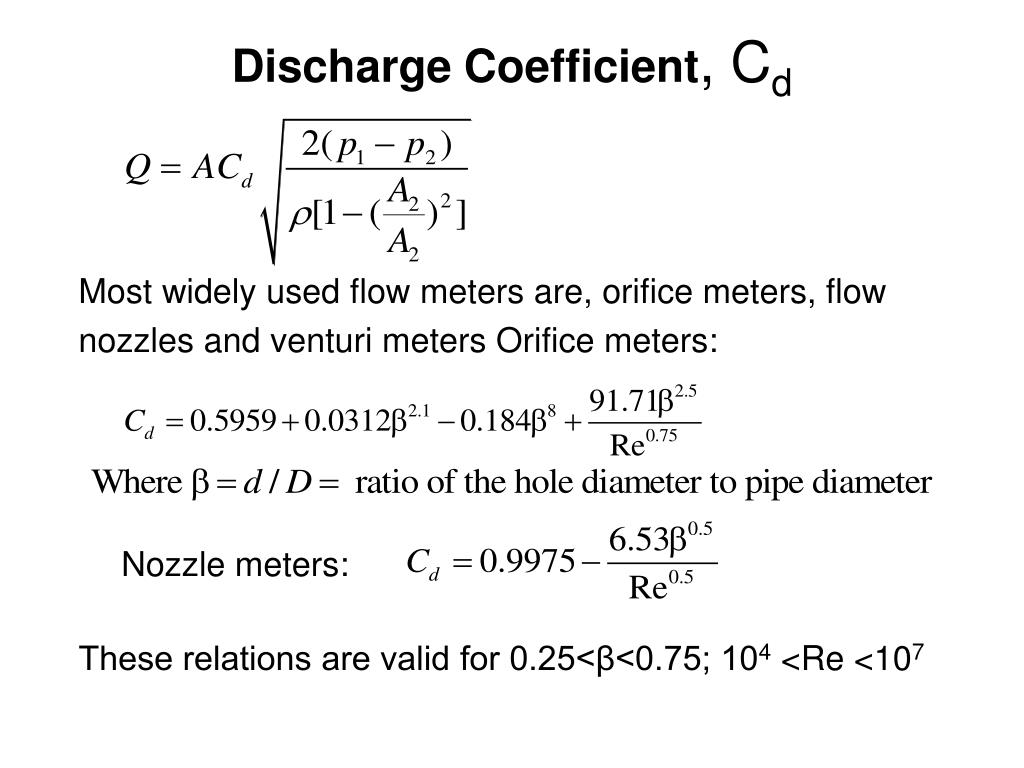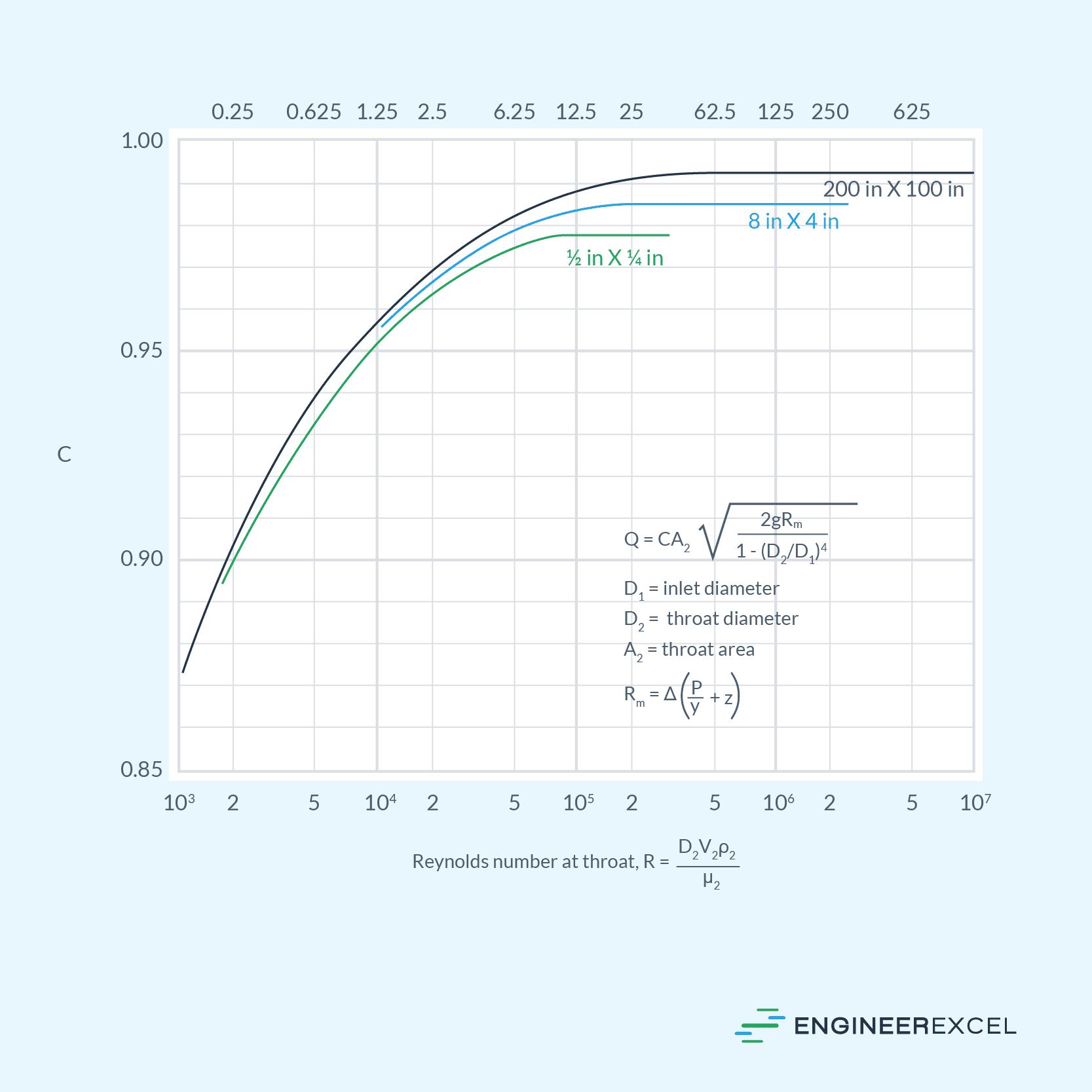Discharge Coefficient Vs Loss Coefficient
Discharge Coefficient Vs Loss Coefficient - Discharge coefficient, which is defined as: K1 is the loss coefficient at the inlet, and k2 is the loss coefficient at the outlet. You need to be able to tell which one is being used, and sometimes. The discharge coefficient is a dimensionless number used to characterise the flow and pressure loss behaviour of nozzles and orifices. “in a nozzle or other constriction, the ratio of the mass flow rate at the discharge end of the nozzle to. Cd is the discharge coefficient for an orifice and is essentially a factor for how close your orifice/nozzle comes to a perfectly.
Discharge coefficient, which is defined as: The discharge coefficient is a dimensionless number used to characterise the flow and pressure loss behaviour of nozzles and orifices. K1 is the loss coefficient at the inlet, and k2 is the loss coefficient at the outlet. You need to be able to tell which one is being used, and sometimes. Cd is the discharge coefficient for an orifice and is essentially a factor for how close your orifice/nozzle comes to a perfectly. “in a nozzle or other constriction, the ratio of the mass flow rate at the discharge end of the nozzle to.
You need to be able to tell which one is being used, and sometimes. The discharge coefficient is a dimensionless number used to characterise the flow and pressure loss behaviour of nozzles and orifices. Discharge coefficient, which is defined as: “in a nozzle or other constriction, the ratio of the mass flow rate at the discharge end of the nozzle to. K1 is the loss coefficient at the inlet, and k2 is the loss coefficient at the outlet. Cd is the discharge coefficient for an orifice and is essentially a factor for how close your orifice/nozzle comes to a perfectly.
Variation of pressure loss, pressure loss coefficient (K) and discharge
The discharge coefficient is a dimensionless number used to characterise the flow and pressure loss behaviour of nozzles and orifices. Cd is the discharge coefficient for an orifice and is essentially a factor for how close your orifice/nozzle comes to a perfectly. You need to be able to tell which one is being used, and sometimes. “in a nozzle or.
Discharge coefficient for all types of spillway Download Table
The discharge coefficient is a dimensionless number used to characterise the flow and pressure loss behaviour of nozzles and orifices. K1 is the loss coefficient at the inlet, and k2 is the loss coefficient at the outlet. Cd is the discharge coefficient for an orifice and is essentially a factor for how close your orifice/nozzle comes to a perfectly. You.
Variation of head coefficients and head loss coefficients with
You need to be able to tell which one is being used, and sometimes. The discharge coefficient is a dimensionless number used to characterise the flow and pressure loss behaviour of nozzles and orifices. Discharge coefficient, which is defined as: “in a nozzle or other constriction, the ratio of the mass flow rate at the discharge end of the nozzle.
Velocity coefficient (Cv) and flow discharge coefficient (Cd) vs
“in a nozzle or other constriction, the ratio of the mass flow rate at the discharge end of the nozzle to. The discharge coefficient is a dimensionless number used to characterise the flow and pressure loss behaviour of nozzles and orifices. Cd is the discharge coefficient for an orifice and is essentially a factor for how close your orifice/nozzle comes.
[Solved] How do you graph the discharge coefficient vs orifice diameter
Discharge coefficient, which is defined as: The discharge coefficient is a dimensionless number used to characterise the flow and pressure loss behaviour of nozzles and orifices. K1 is the loss coefficient at the inlet, and k2 is the loss coefficient at the outlet. “in a nozzle or other constriction, the ratio of the mass flow rate at the discharge end.
PPT Example 1 Velocity measurement by a Pitot tube PowerPoint
Cd is the discharge coefficient for an orifice and is essentially a factor for how close your orifice/nozzle comes to a perfectly. “in a nozzle or other constriction, the ratio of the mass flow rate at the discharge end of the nozzle to. Discharge coefficient, which is defined as: The discharge coefficient is a dimensionless number used to characterise the.
Loss coefficient of the fluid flow in the gate valve as a function of
Discharge coefficient, which is defined as: Cd is the discharge coefficient for an orifice and is essentially a factor for how close your orifice/nozzle comes to a perfectly. You need to be able to tell which one is being used, and sometimes. “in a nozzle or other constriction, the ratio of the mass flow rate at the discharge end of.
Viscous Flow in Ducts Computation of Discharge Coefficient
“in a nozzle or other constriction, the ratio of the mass flow rate at the discharge end of the nozzle to. You need to be able to tell which one is being used, and sometimes. K1 is the loss coefficient at the inlet, and k2 is the loss coefficient at the outlet. The discharge coefficient is a dimensionless number used.
Variation of the discharge coefficient with the Reynolds number in test
Cd is the discharge coefficient for an orifice and is essentially a factor for how close your orifice/nozzle comes to a perfectly. The discharge coefficient is a dimensionless number used to characterise the flow and pressure loss behaviour of nozzles and orifices. Discharge coefficient, which is defined as: K1 is the loss coefficient at the inlet, and k2 is the.
Coefficient of Discharge for Venturi Meters Fluid Flow Precision
You need to be able to tell which one is being used, and sometimes. Cd is the discharge coefficient for an orifice and is essentially a factor for how close your orifice/nozzle comes to a perfectly. The discharge coefficient is a dimensionless number used to characterise the flow and pressure loss behaviour of nozzles and orifices. “in a nozzle or.
Cd Is The Discharge Coefficient For An Orifice And Is Essentially A Factor For How Close Your Orifice/Nozzle Comes To A Perfectly.
K1 is the loss coefficient at the inlet, and k2 is the loss coefficient at the outlet. The discharge coefficient is a dimensionless number used to characterise the flow and pressure loss behaviour of nozzles and orifices. Discharge coefficient, which is defined as: You need to be able to tell which one is being used, and sometimes.







